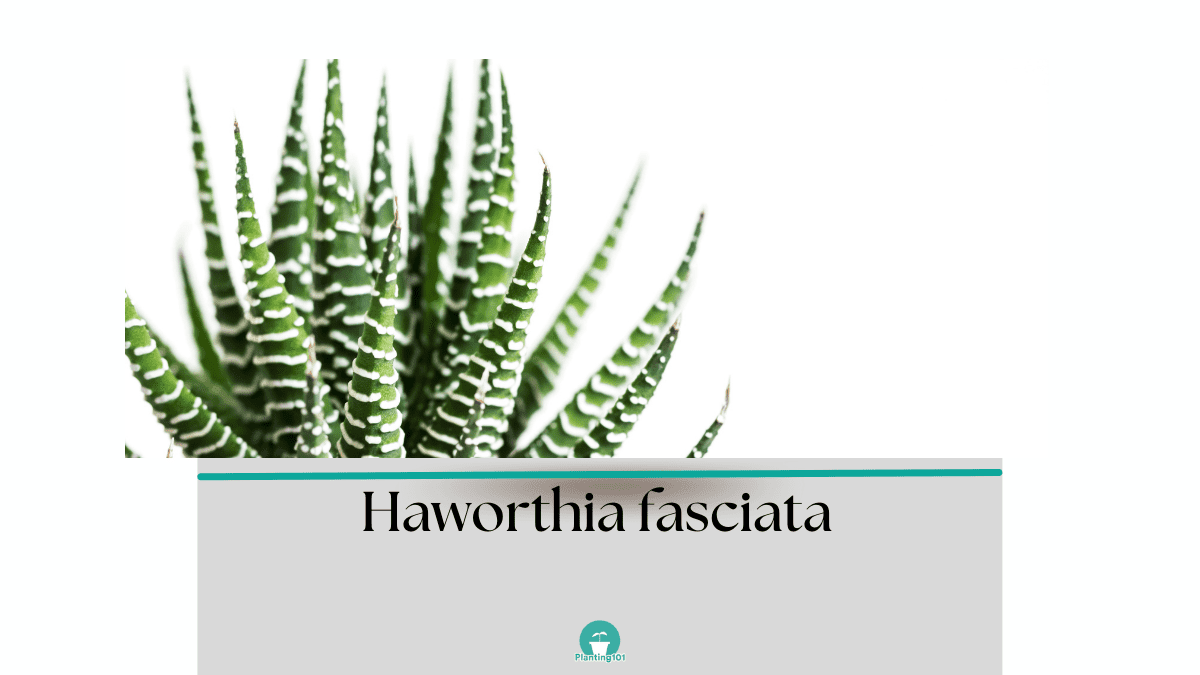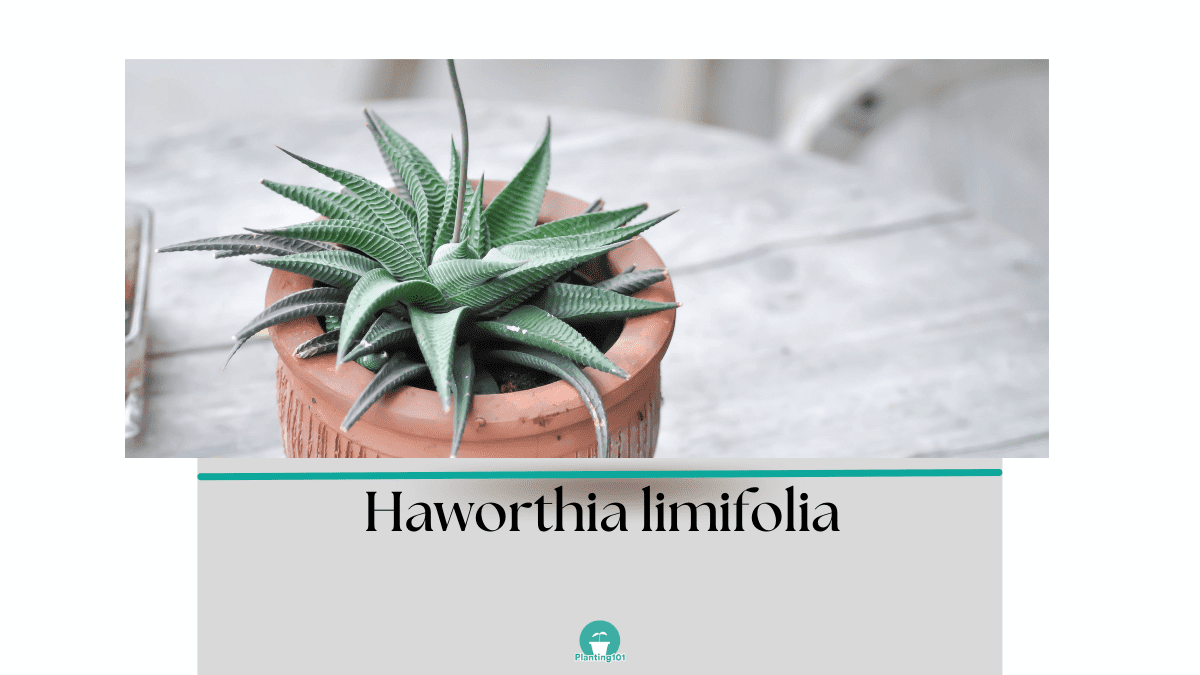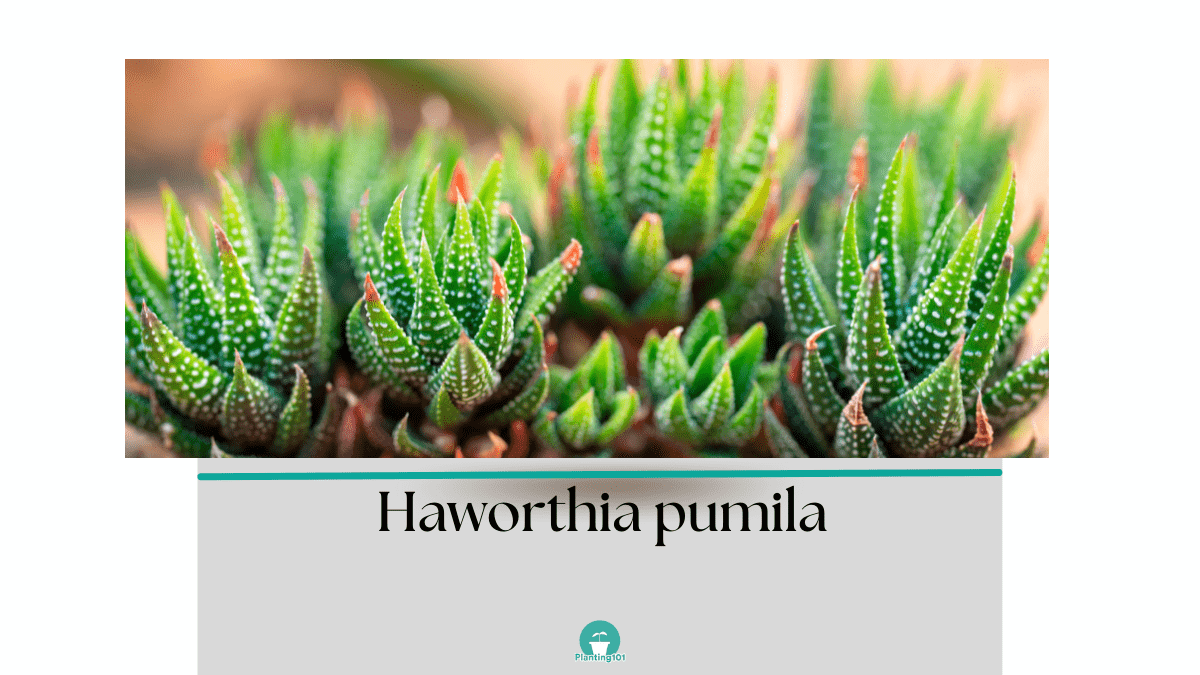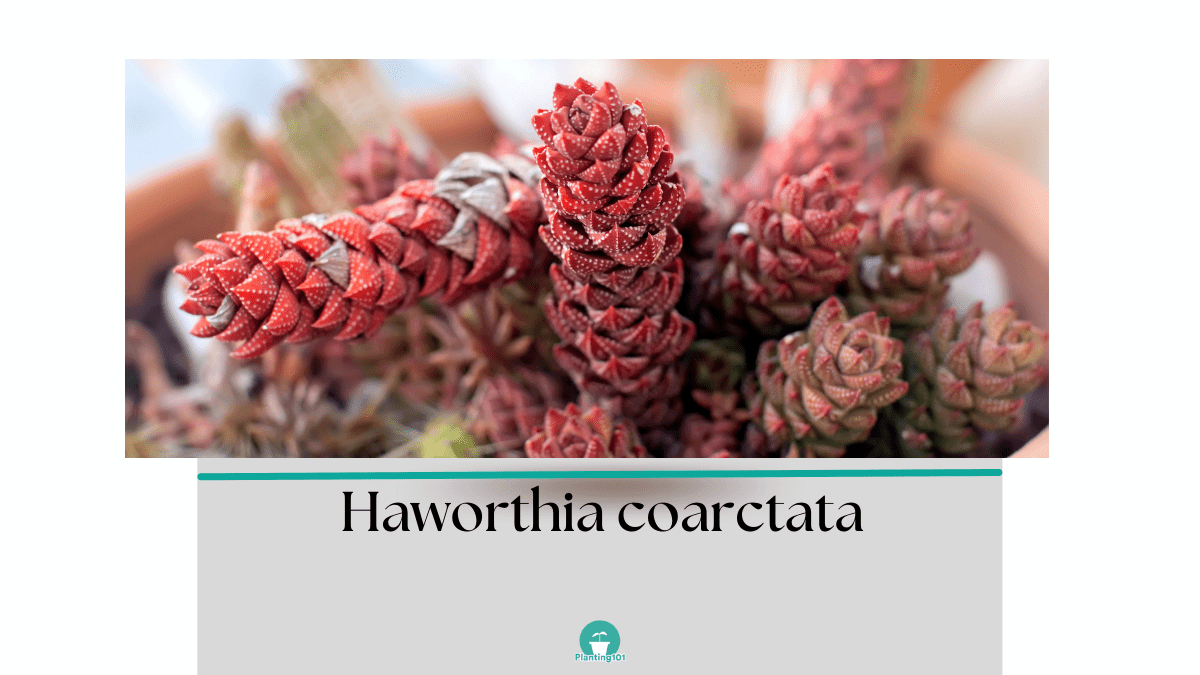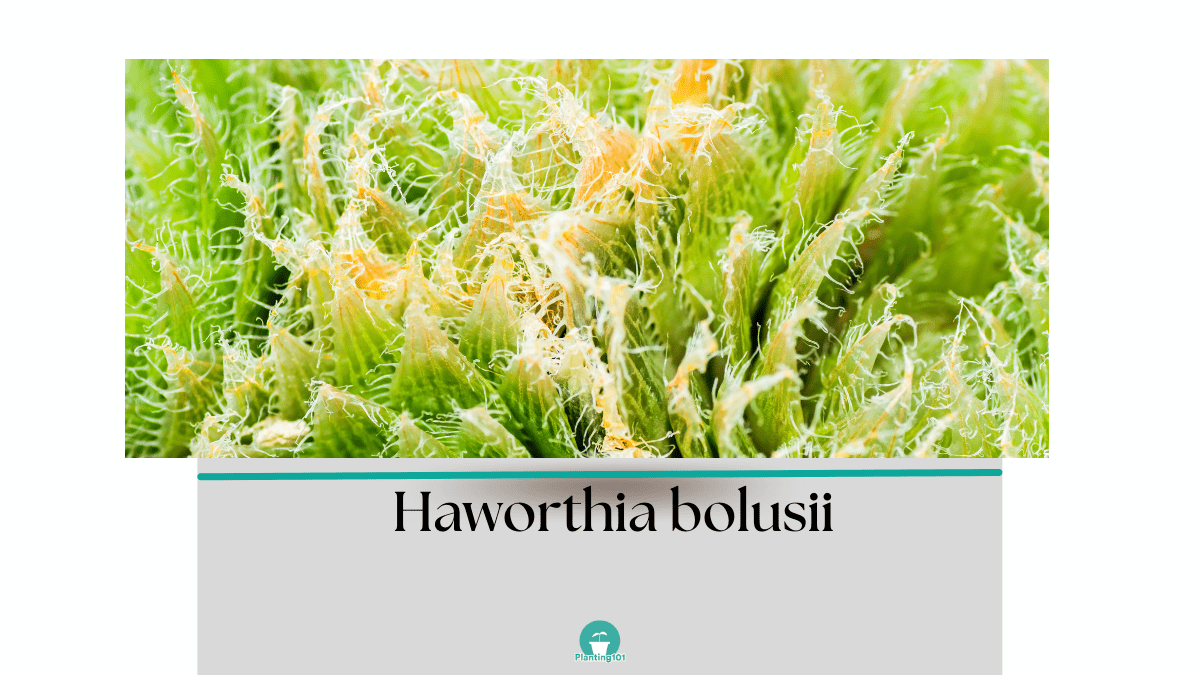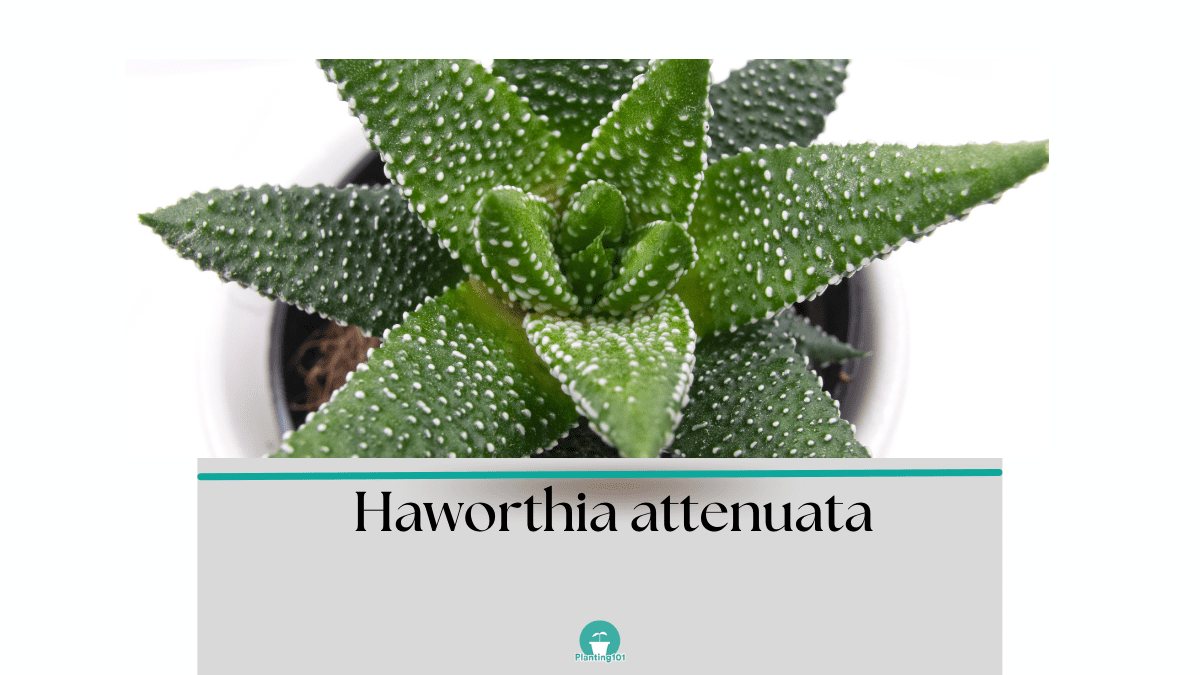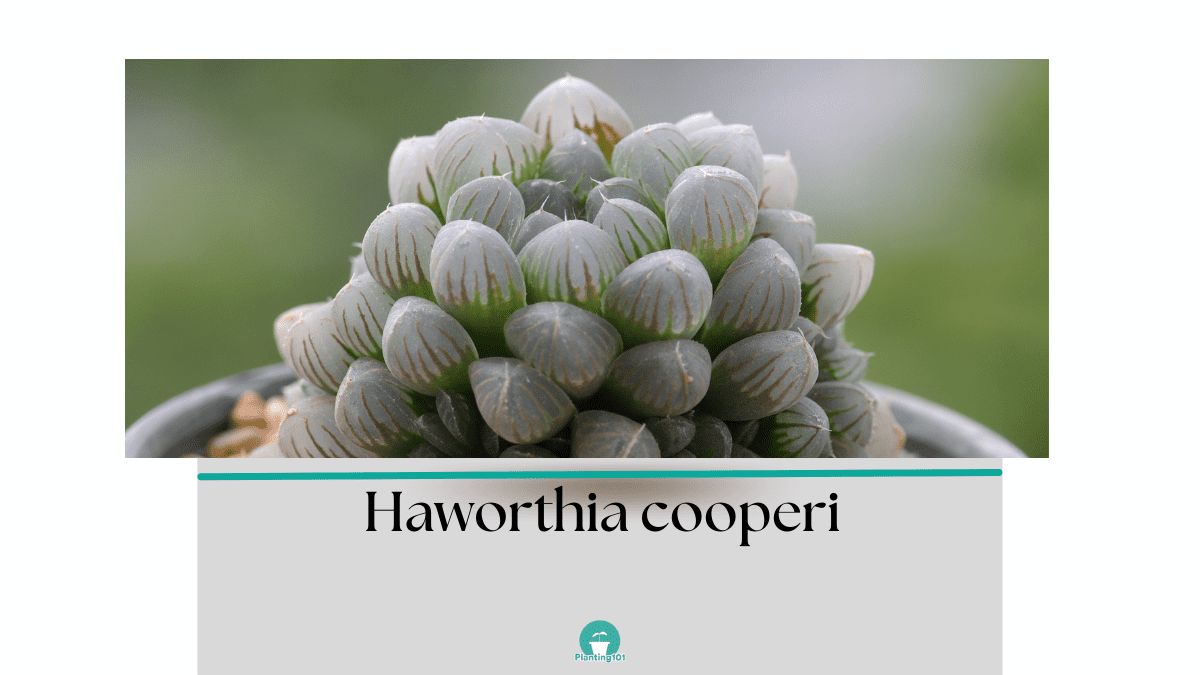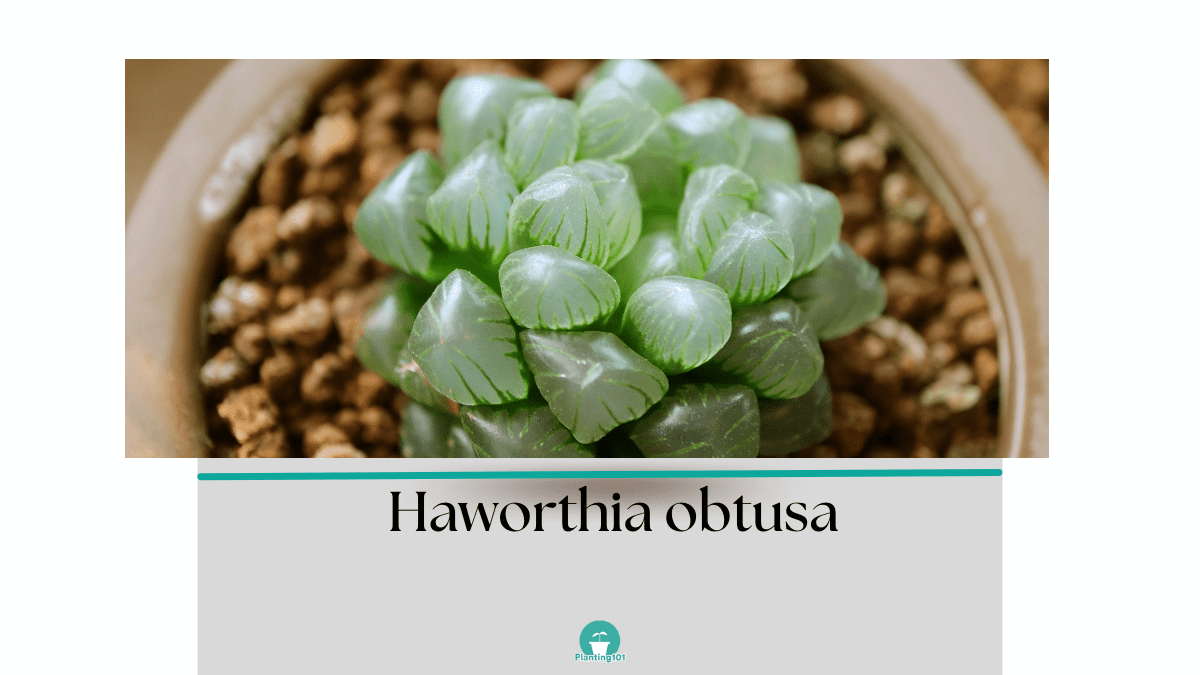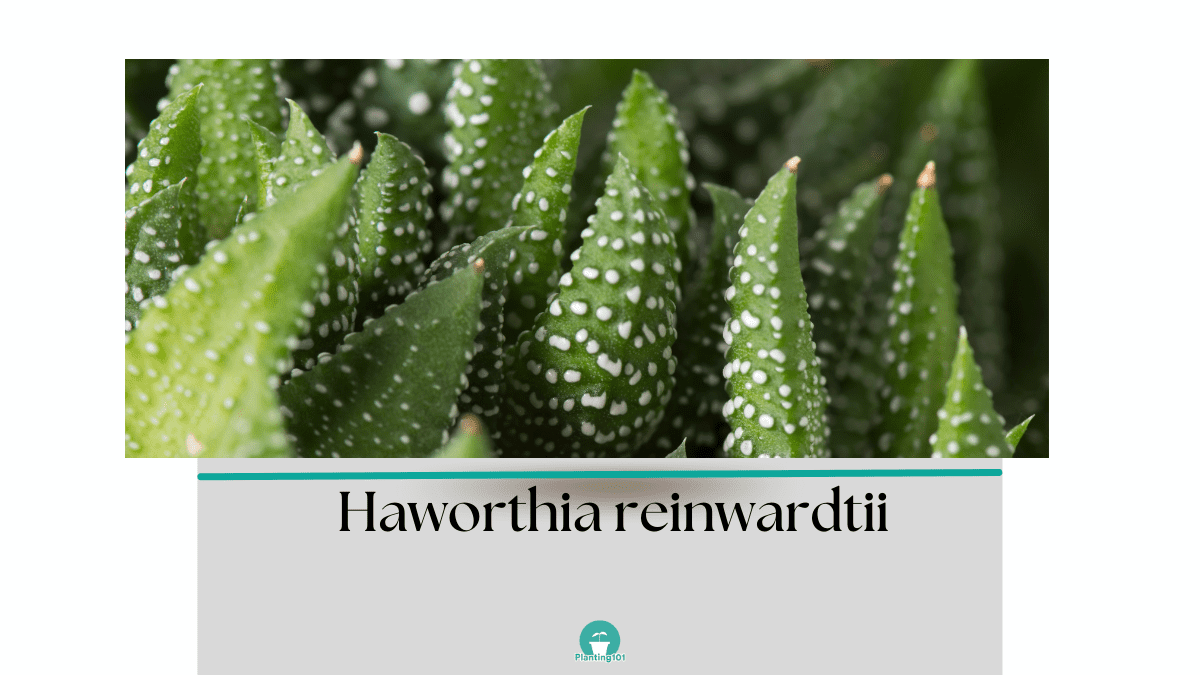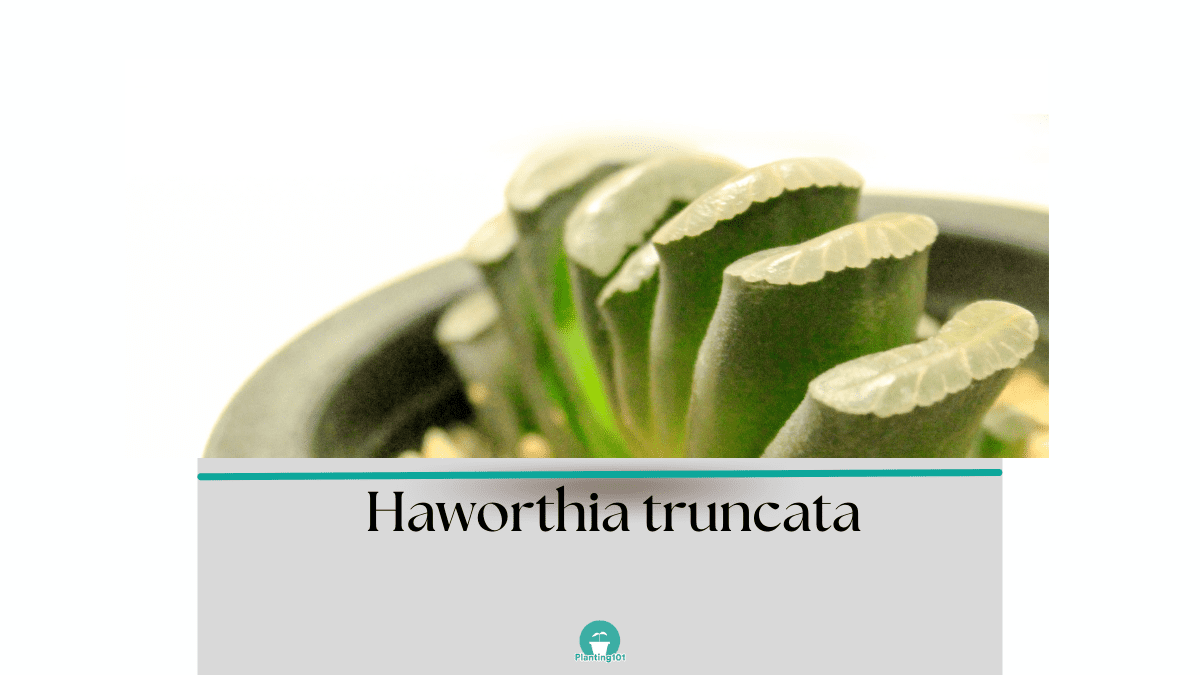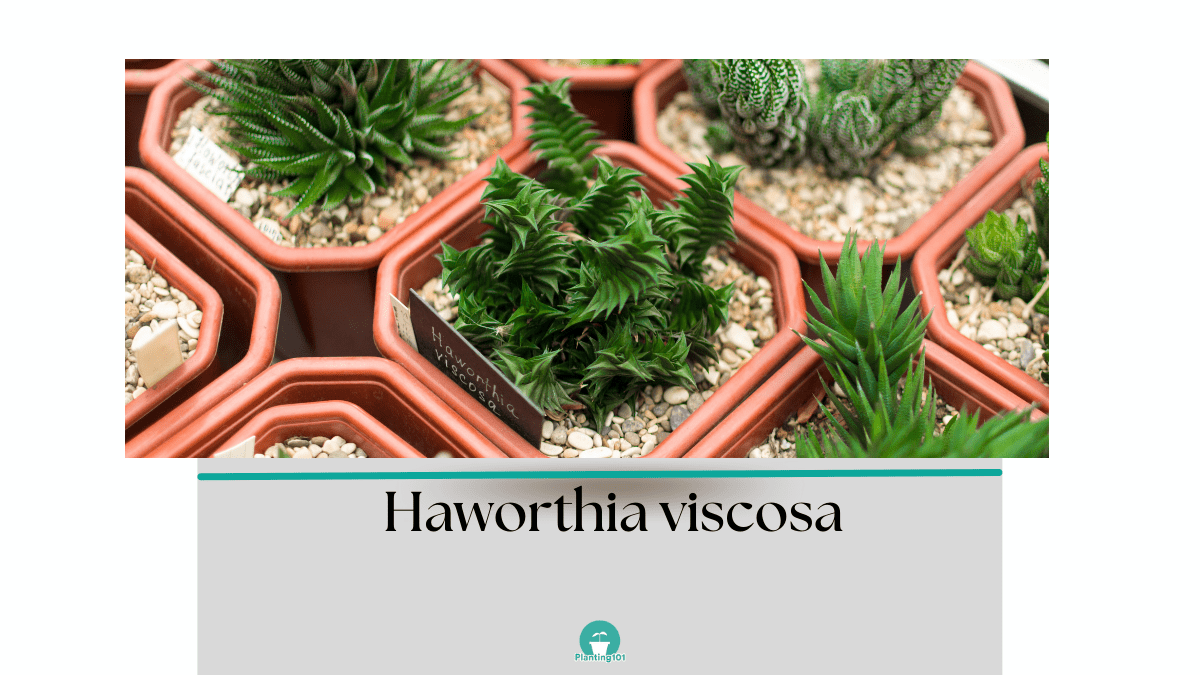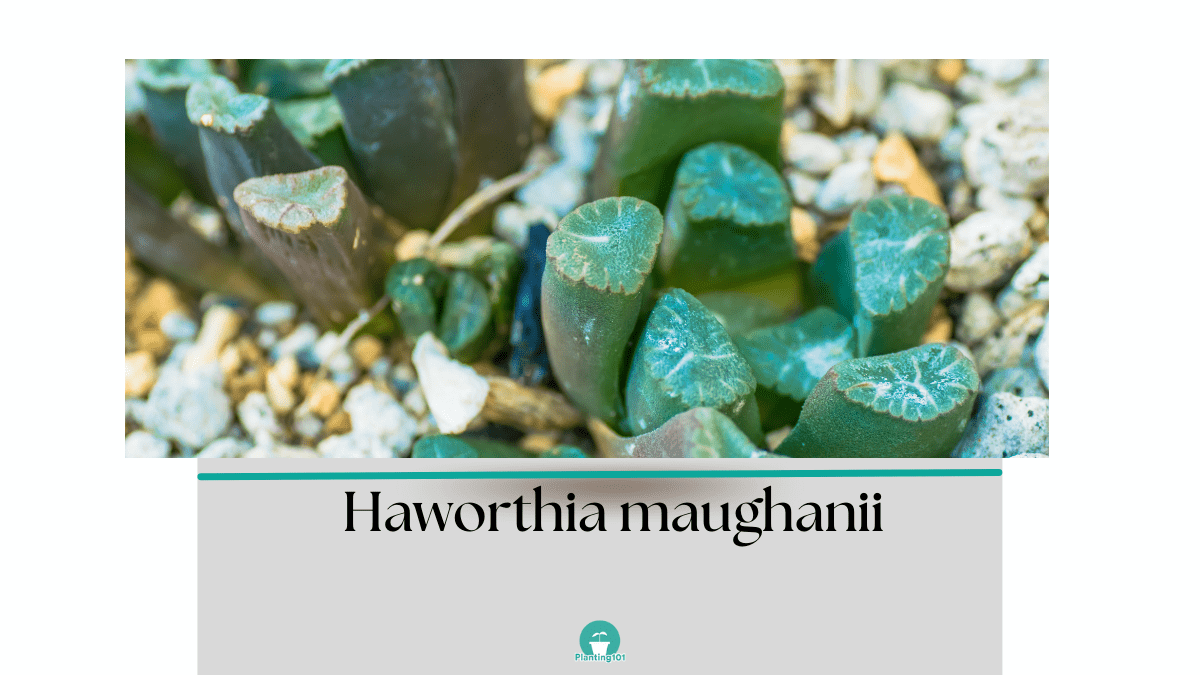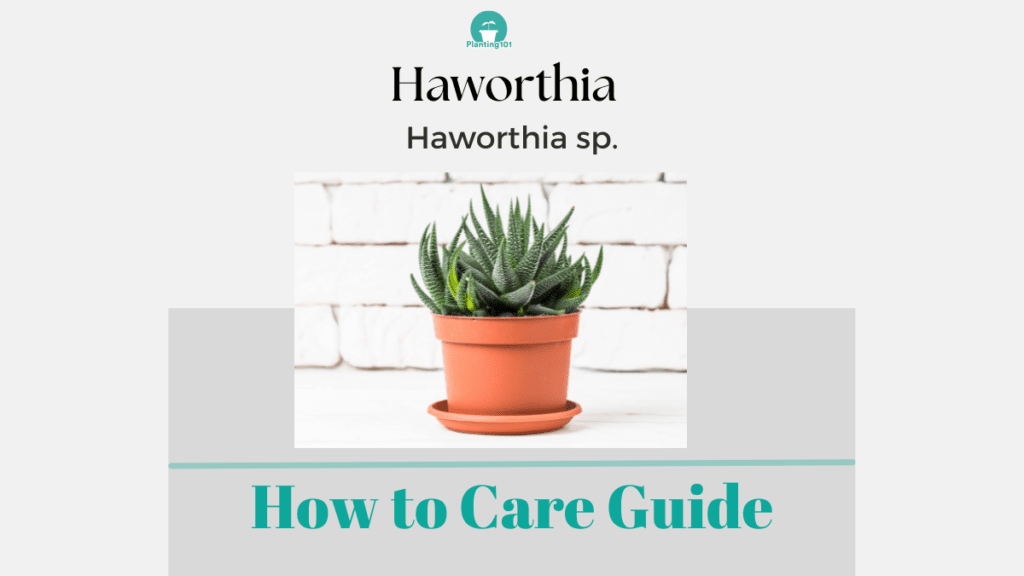Haworthia are popular succulents because they are hardy, easy to grow and almost impossible to kill. There are around 150 species of Haworthias with varying leaf shapes and markings. The more popular Haworthia species such as Haworthia attenuata and Haworthia fasciata look like mini aloe plants with zebra stripes. Other popular indoor species of Haworthia are Haworthia bolusii and Haworthia truncata.
Haworthia are sun loving succulents and that are easy to care for. If you are looking for a small, low maintenance houseplant that does not need to be watered everyday, Haworthia is ideal for you. In fact, it thrives in dry conditions and will only need occasional watering.
Here are tips and advice on how to take care of your Haworthia.
Haworthia Infographic
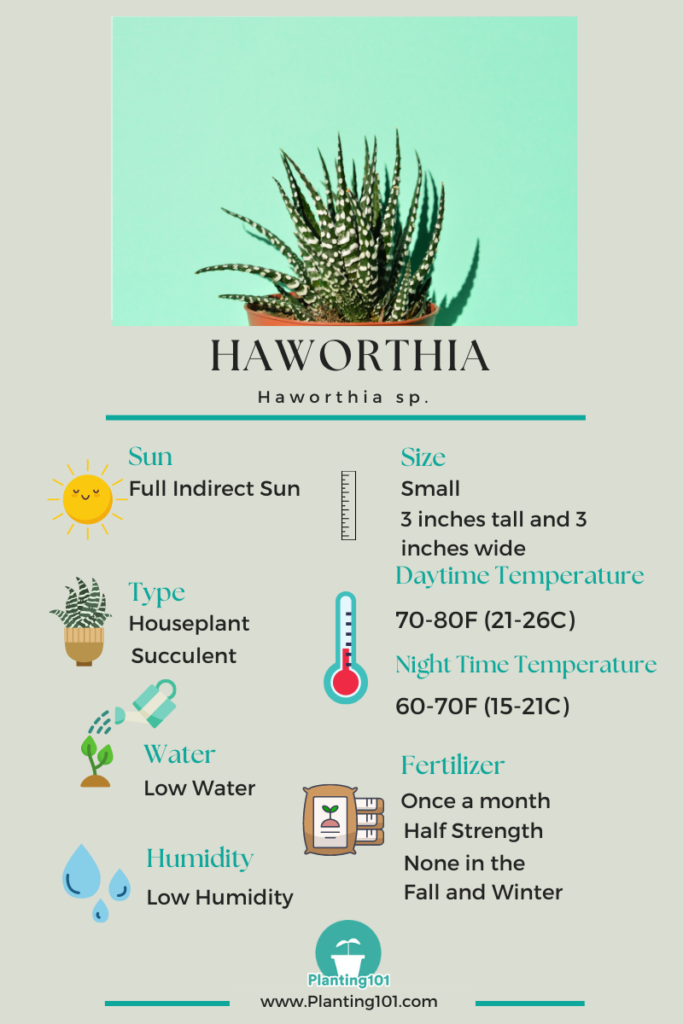
Haworthia Characteristics
| Name | Haworthia |
| Scientific Name | Many species. Most popular indoor species are Haworthia bolusii, Haworthia attenuata, Haworthia fasciata, Haworthia truncata and Haworthia maxima |
| Light | Bright Indirect Light |
| Daytime Temperature | 70 to 80 F (21-26C) |
| Night Time Temperature | 60 to 70 F (15-21C) |
| Water | Low Water |
| Humidity | Low Humidity |
| Potting | Fast draining potting soil (cactus soil or succulent soil) |
| Fertilizer | Once a month at half strength but not in the Fall or Winter |
What are Other Names of Haworthia Plants?
Haworthia is also called zebra plant, pearl plant or zebra cactus.
Do Haworthia Plants Prefer Sun or Shade?
Haworthia plant is a sun loving indoor houseplant. The best placement for your Haworthia is next to a south facing window. If you don’t have a south facing window, you can position your Haworthia next to a west facing window with medium light.
It loves bright sunny spots but can easily sunburn so you should avoid direct sunlight. Give it filtered or indirect sun.
How Do You Know If Your Haworthia Plant is Receiving Enough Sunlight?
If you see the leaves of your Haworthia turning brown that means it is getting too much sunlight. If you see the rosettes slumping, that means your Haworthia plant is not getting enough sun.
How Often Should You Water Your Haworthia Plants?
Haworthia plant prefers dry soil. Overly wet soil will kill it. Since Haworthia is a succulent, only water when the soil feels dry. During winter, water your Haworthia sparingly.
How Do You Know When to Water Your Haworthia Houseplant?
Haworthia plant does not need a lot of water, it’s a drought resistant, succulent plant. The best way to tell when it’s time to water is by sticking your finger into the soil 2 inches deep. If the soil feels dry, then water moderately. If the soil still feels moist and wet, don’t water it yet. Wait another week. When in doubt, it’s better to water less than to water too much.
What Type of Water Should You Use When Watering Haworthia Houseplant?
Haworthia plant can be watered with tap water but be mindful of the water temperature that you are using to water your Haworthia. Don’t use straight cold water from the tap to water your Haworthia.
Haworthia plant prefers cool water that is not hot and not cold. When you turn on the cold water from the faucet add a little bit of warm water. You can also get to this ideal temperature by filling a watering can or pitcher with water and leaving it out overnight until the water is at room temperature.
How Do You Make Sure There is Proper Drainage for Your Haworthia Houseplant?
Haworthia plant needs proper drainage otherwise it might suffer from stem rot. To ensure proper drainage, make sure the pot has drainage holes at the bottom. After watering your plant, don’t let it sit in the puddle of water that has accumulated in the saucer. Empty out the water from the saucer.
Do You Need to Mist Your Haworthia Houseplant?
Haworthia plant prefers low humidity so it’s not necessary to mist it.
What Type of Potting Mix is Best for Your Haworthia Plant?
Haworthia houseplants need a fast draining potting mix. You can buy premixed potting soil with mycorrhizal fungi that are made specially for cactus and succulents. It’s best to buy organic soil mixtures because non-organic soil mixtures often contain a higher concentration of fertilizer which can burn the roots of your plant. Non-organic soil mixtures are not generally suitable for houseplants.
Haworthia Houseplant Potting Mix
You can make your own potting mix for your Haworthia by blending the following potting media:
- 1 Part Horticultural Sand
- 1 Part General Purpose Organic Potting Medium
- 1 Part Perlite
Do You Need to Fertilize Haworthia Houseplants?
Your Haworthia will benefit from a once a month application of fertilizer. Apply fertilizer at half strength during Spring and Fall months. Don’t feed in the Winter months when it’s dormant and not growing. Only fertilize your Haworthia when it’s actively growing.
What Fertilizer Should You Use for Your Haworthia Plant?
Use organic fertilizers with a balanced Nitrogen, Phosphorus and Potassium content.
How Do You Know When To Repot Your Haworthia?
You will need to repot your Haworthia every 1-2 years. Buy a larger pot, around 2 inches larger in diameter than the current pot. Make sure you buy a pot that has drainage holes at the bottom so water doesn’t accumulate and cause root rot and stem rot.
How Big Do Haworthia Plants Get?
Haworthia are small succulents that typically are 3 inches tall and 3 inches wide. However, some species of Haworthia can grow much taller and wider.
How Do You Propagate Haworthia Plants?
Haworthia is easy to propagate. Your Haworthia will grow pups or offsets. These are offshoots connected to the mother succulent plant. You will see that these offsets have roots. Simply cut off your Haworthia offsets with a sharp, sterilized knife. Make sure you include a sufficient amount of roots with your pup cutting.
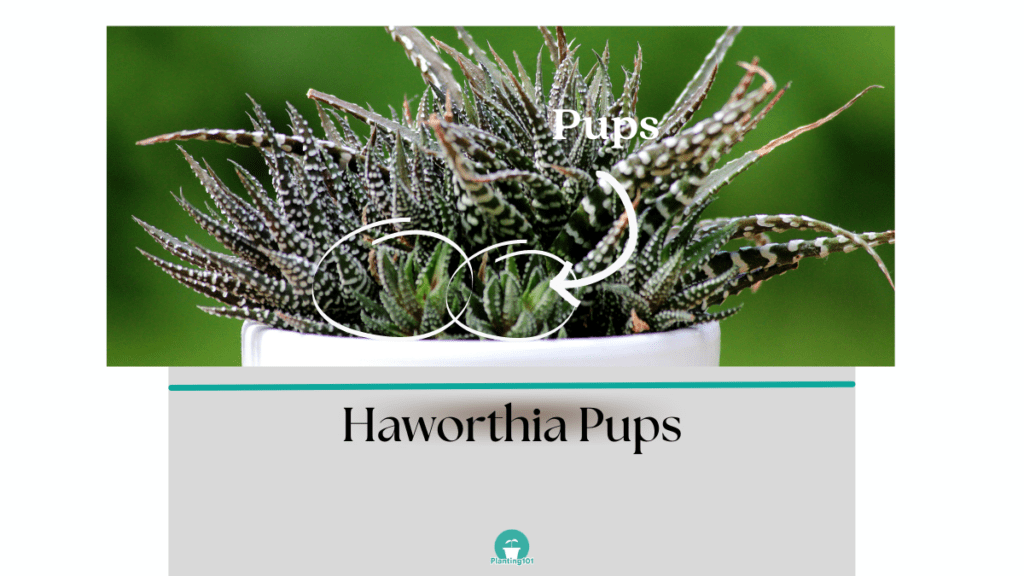
Don’t remove offsets from the mother plant if they are too small. Only cut off offsets that have grown large enough that you can hold it.
Leave the offset cutting out overnight before planting it in a pot. This will allow the raw end that was cut to dry up. Plant your Haworthia pup in a pot with succulent potting mix. Water after planting. Water every 2-3 days until the roots are established. Place your new Haworthia plant in a spot with bright indirect sunlight.
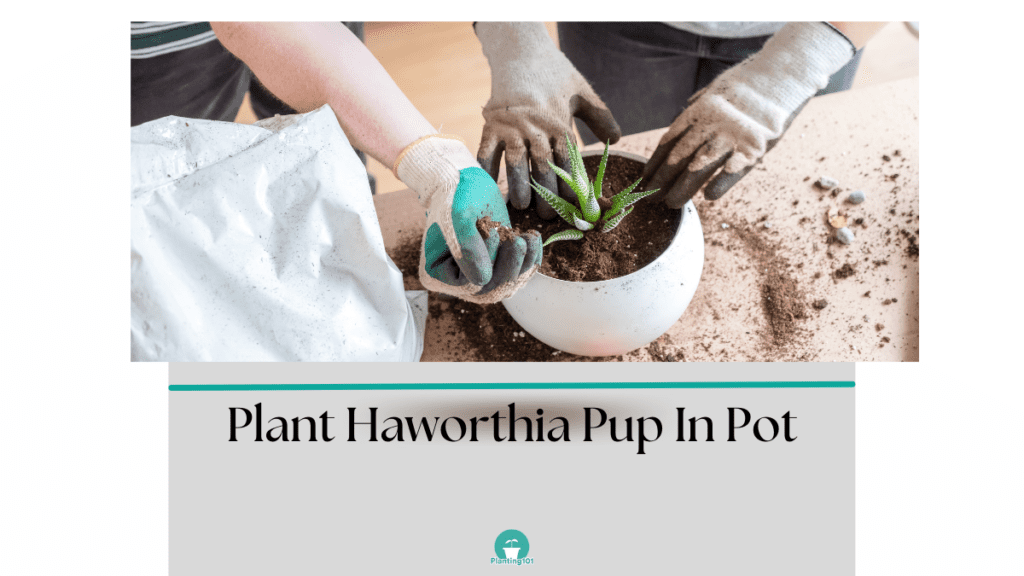
What are Common Problems that Affect Haworthia Houseplants?
The common problems that affect Haworthia are root rot, mealybugs and sunburn.
Why Are There Fluffy White Growth In Between the Leaves and Stems of Your Haworthia Plant?
These fluffy white growth in between the leaves and stems of your Haworthia are probably a result of mealybugs. These pests are common in houseplants. They are caused by insects. Once you know there is a mealybug infestation, immediately wash off the mealybugs from your Haworthia with water or soapy water.
You can also spray it with rubbing alcohol. Another option is to spray your Haworthia plant with horticultural oil and insecticidal soap. These are effective ways to get rid of mealybugs on Haworthia houseplants.
Check out our article on how to make your own homemade pesticides using baby shampoo: How to Make Horticultural Oil and How to Make Insecticidal Soap
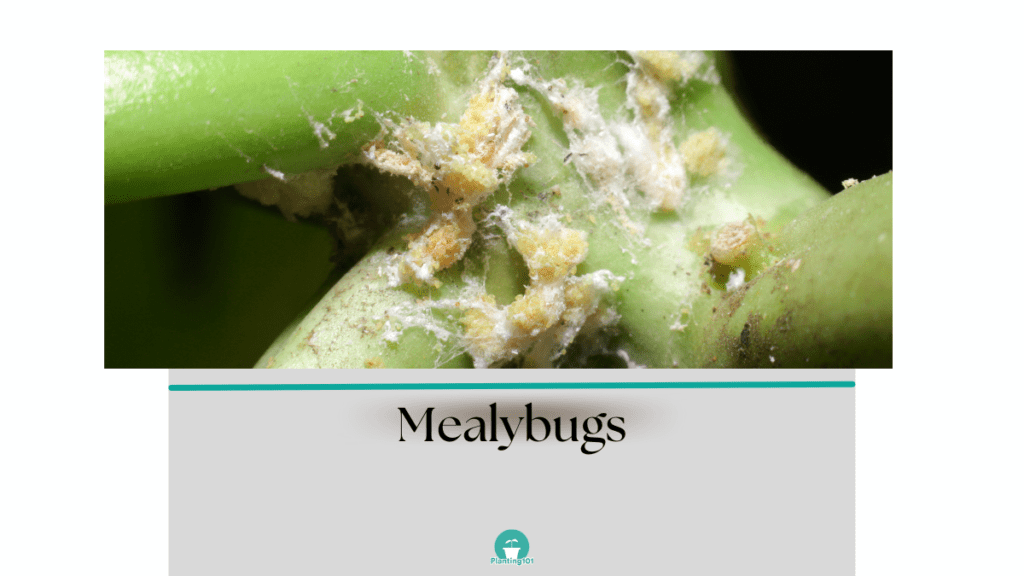
Why are there Brown and Black Patches on the Leaves of Your Haworthia?
These brown or black patches on your Haworthia are sunburn spots. This is a result of too much direct, hot sun on your Haworthia. Unfortunately, these sunburn spots are permanent so will not turn back green even when your Haworthia is moved to a less sunny spot.
Why Does Your Haworthia Look Wilted Even if the Soil is Wet?
Your Haworthia looks wilted even if the soil is wet. There is a chance your Haworthia is suffering from root rot. The way to tell if its root rot is to pull the plant out and examine the roots. If the roots of your Haworthia plant look mushy and are gray to black in color, these are telltale signs of root rot.
The cause of root rot is a result of wet soil due to overwatering or poor drainage. Root rot is caused by fungus and is a serious problem for your Haworthia. When your Haworthia is afflicted with root rot the chance of survival is slim. Prevention is key, don’t overwater your Haworthia in the first place and make sure there is good drainage in the pot.
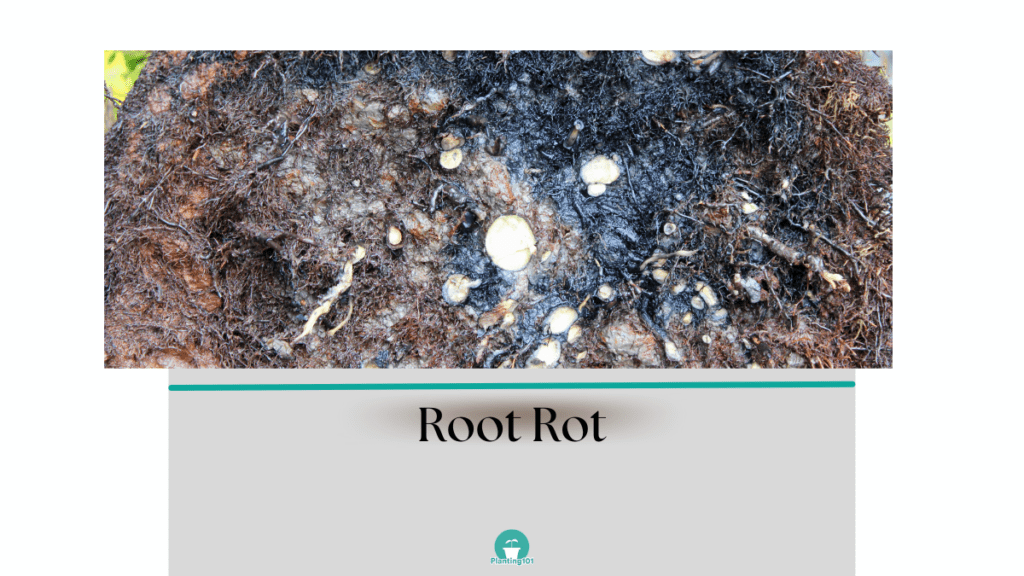
Types of Haworthia
